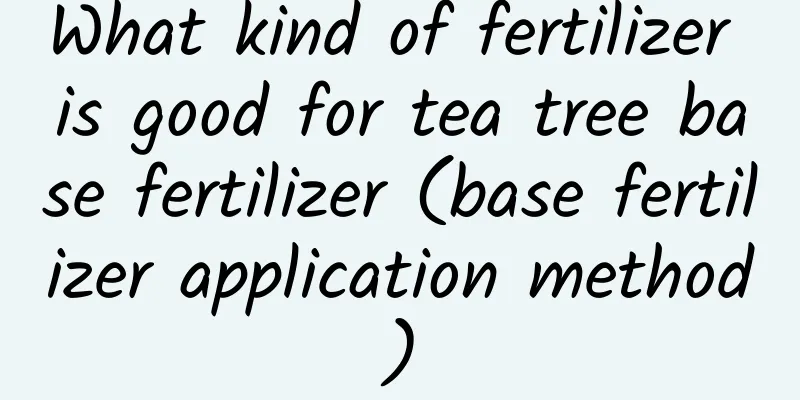What kind of fertilizer is good for tea tree base fertilizer (base fertilizer application method)

The role of tea tree base fertilizerAs a perennial evergreen crop, tea trees have obvious characteristics of nutrient storage and reuse. The above-ground part stops growing, but the underground part continues to absorb nutrients. In addition to maintaining basic metabolism during the winter, most of the absorbed nutrients are stored in the root system, which becomes the material basis for the sprouting of new shoots in the second year, playing a decisive role in the early growth and fatness of spring tea. Tea tree fertilizer selectionTo improve the fertility of the soil for tea trees, you can apply garbage fertilizer, straw, ferns, and farmyard manure after deep plowing the soil. Add lime and compound fertilizer to each hole. The base fertilizer should be applied deeply, but not too close to the roots. It is enough to be about 15 cm away from the bottom of the seedling roots. Then fill the soil and cover the top with the original base soil to prevent grass growth. How to use tea tree base fertilizerThe base fertilizer for tea trees should be applied in early to mid-October, which can improve the fertility of the soil and enhance the cold resistance of the plants. The amount of base fertilizer used in conventional tea gardens is 15,000-20,000 kg of compost plus 250-400 kg of phosphate rock fertilizer per mu, which should be applied after being piled for 5-10 days. If it is a densely planted fast-growing tea garden, the amount of base fertilizer should be increased, that is, the amount of fertilizer per mu should be increased to 25,000-30,000 kg, and 250-400 kg of phosphate rock powder should be added to the compost, and applied after piling for 5-10 days. In this way, better fertilization effects can be achieved. How to apply fertilizer to tea treesThe first topdressing time for tea trees is at the end of May, with more nitrogen and potassium fertilizers, 30% nitrogen fertilizer, 25% phosphorus fertilizer, and 30% potassium fertilizer. The second topdressing time is at the end of July, with a nitrogen, phosphorus, and potassium ratio of 30% nitrogen fertilizer, 25% phosphorus fertilizer, and 30% potassium fertilizer. |
<<: How to propagate Sedum and what to pay attention to
>>: How does spider silk roll explode?
Recommend
How to prune wood chrysanthemum
When to prune chrysanthemums Wood chrysanthemum n...
Grape growing environment and local conditions
Grape growing environment and conditions Grapes g...
Pomegranate potted planting methods and precautions
The habits of potted pomegranates and ordinary po...
What is the best season to plant carnations?
Which month is suitable for planting carnations? ...
These 9 kinds of flowers can be grown into curtains when placed indoors. They are much more beautiful than green ivy and spider plants!
Clematis Clematis blooms in summer, and its flowe...
How to prune tomatoes: Pruning time and technique
Tomato pruning time When pruning tomatoes, be sur...
What are the varieties of ginkgo?
Buddha's hand ginkgo It is called ginkgo nut,...
Can I grow chives at home?
Can I grow chives at home? You can grow leeks at ...
The role of the Buddha lotus
Watch The Buddha Seat Lotus is also called Guanyi...
Does Kalanchoe need watering after cuttings (How to water and maintain Kalanchoe after cuttings)
How to water the Kalanchoe after cuttings (1) Let...
Effects, functions and side effects of honeysuckle tea
1. Efficacy and Function 1. It has the effect and...
How to grow Clivia in winter
1. Lighting Winter is the growing season for Cliv...
When to water the green radish? Is it ok to water it with tea water?
1. Watering time of green radish The specific tim...
Cultivation methods and precautions of large-leaf gardenia
Large-leaf gardenia is a variety of gardenia, whi...
How to grow carambola
1. Maintenance methods 1. Temperature: Most tropi...









